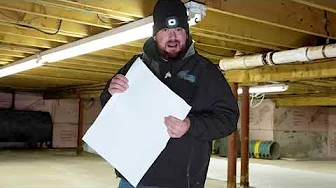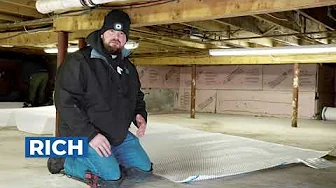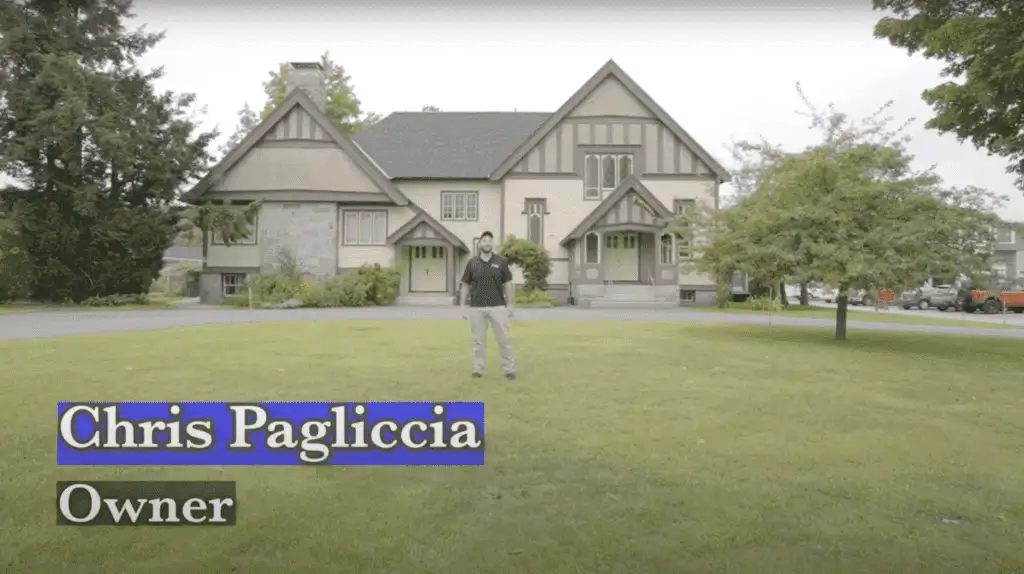Foundation Crack Repair South Berwick ME
Cracks in your foundation can lead to serious structural problems if left untreated. Living in South Berwick, ME, homeowners face unique challenges due to New England’s weather and soil conditions. The freeze-thaw cycle during colder months, combined with shifting soil, can create stress on your foundation over time. Catching these cracks early and addressing them properly can save you from costly repairs and ensure your home’s stability.
Real People - Real Great Results
Crawl Space Video Playlist
Signs of Foundation Issues
Foundations don’t fail overnight—they whisper warnings long before they shout disaster. Recognizing those early signs is half the battle. Here’s what to watch for:
- Visible Cracks: The most obvious red flag. Whether they crawl vertically, stretch horizontally, or zigzag in a stair-step pattern, cracks in your foundation walls or floors are your home’s way of saying, “I’m under stress.” Not all cracks are created equal, though, and their direction can hint at the underlying problem.
- Sticky Doors or Windows: If you suddenly need to wrestle your windows open or slam your doors shut, you might have more than a humidity problem. Shifting foundations can warp frames, subtly distorting how they fit.
- Uneven Floors: Noticing that your ball rolls on its own—and it’s not because of poor aim? Sloping or dipping floors could signal that your foundation is settling unevenly.
- Leaks or Moisture: A damp basement isn’t just a nuisance; it’s potentially a symptom. Water finding its way inside can mean cracks are wide enough to let moisture seep through, worsening structural issues over time.
Ignore these signs at your own peril. Spot them early, and you’ll save yourself from a wallet-draining, stress-inducing repair marathon. Sometimes, the best fix is catching the problem before it grows legs.
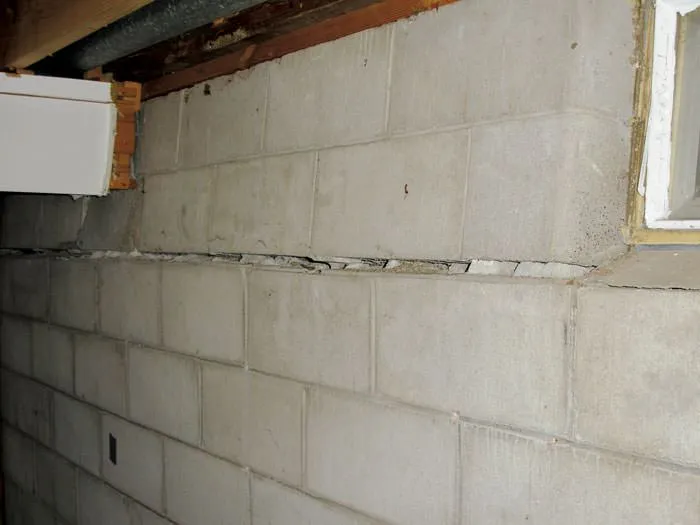
Causes of Foundation Cracks in South Berwick, ME
Living in South Berwick, ME, introduces unique stressors to your home’s foundation that can’t be ignored. Around here, it’s not if your foundation will face stress, but when. Knowing the main culprits can help you understand the “why” behind those cracks.
- Seasonal Temperature Changes: The freeze-thaw cycle in New England is no joke. When winter rolls in, moisture in the soil freezes and expands, putting pressure on your foundation. Come spring, things thaw and shift again. Repeat this over years, and suddenly those small cracks tell a much bigger story.
- Water Damage: Take a rainy spring, add some poor drainage, and you’ve got a recipe for hydrostatic pressure—the fancy name for what happens when water builds up in the soil and pushes against your foundation. South Berwick’s occasional high water table doesn’t help, either. Prolonged exposure to water can weaken concrete and widen existing cracks faster than you’d think.
- Soil Movement: Not all dirt is created equal. The soil underneath your home might expand, contract, or just plain move. South Berwick’s layered mix of glacial till and clay-heavy soils can wreak havoc on your foundation, causing it to settle unevenly and crack under the pressure.
- Construction Shortcomings: Not every foundation is built with the same care and materials. Whether it’s due to rushed construction, bad concrete mixes, or improper reinforcement, shortcuts taken decades ago could be showing up as cracks today.
Put simply, the cracks in your foundation are often the result of a tug-of-war between your home and the elements. South Berwick’s environment plays rough—knowing the causes is your first step to staying ahead of the damage.
Types of Foundation Cracks
Not all foundation cracks are created equal. Some are harmless, while others can signal serious structural risks. Here’s the rundown on the most common types:
- Hairline Cracks: These thin, superficial cracks are usually a byproduct of the normal settling process or shrinkage of concrete as it cures. They’re more of a cosmetic issue than a structural one, but don’t ignore them completely. Keep an eye on their width over time; if they start to spread or widen, they could signal a deeper problem brewing beneath the surface.
- Vertical Cracks: Often caused by the foundation settling unevenly, vertical cracks are generally less alarming than other types. These are especially common in South Berwick, where weather and soil conditions put homes through a constant cycle of stress. While they’re typically not a cause for panic, they can provide easy entry points for water, leading to potential moisture issues in your basement or crawl space.
- Horizontal Cracks: These cracks are the ones you really don’t want to shrug off. Horizontal lines running along the walls of your foundation often indicate significant pressure from external forces, such as waterlogged soil pushing inward. Left unchecked, they can lead to bowing walls or even outright collapse. If you spot one, call in a professional immediately—it’s not up for debate.
- Stair-Step Cracks: If your foundation is made of brick or block, stair-step cracks are what you need to look out for. These zig-zag patterns follow the mortar joints and are typically caused by uneven settlement or shifting soil. On their own, they’re not necessarily disastrous, but over time, they can compromise the structural integrity of your home. Monitoring and addressing them early is key to staying ahead of more serious damage.
Understanding the type of crack you’re dealing with is the first step toward addressing it effectively. Foundation cracks often seem small at the outset, but ignoring the warning signs—even the harmless-looking ones—can lead to bigger headaches down the road.
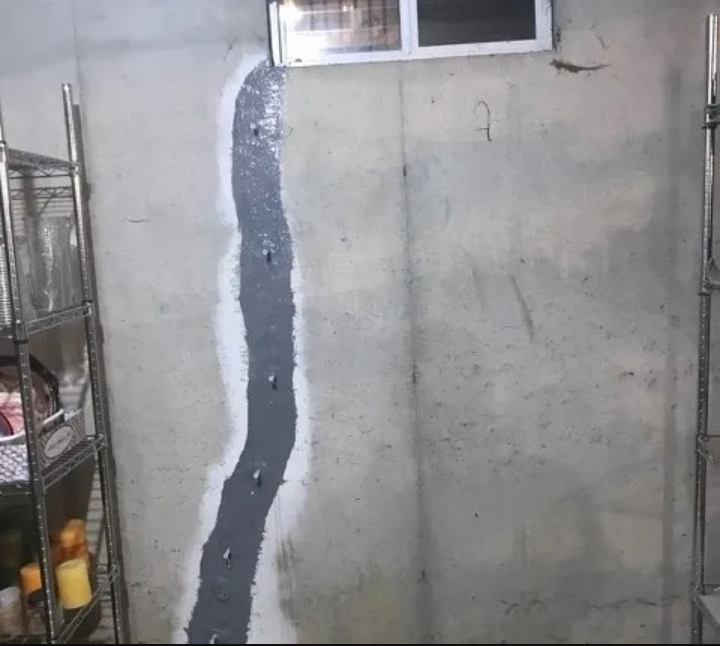
Why Prompt Foundation Repair Is Crucial
Foundation cracks aren’t a “wait and see” kind of problem. Ignoring them doesn’t buy you time—it costs you. Even small cracks can widen or deepen due to seasonal stressors like South Berwick’s freeze-thaw cycles or heavy rainfall. Left unattended, these small issues can cascade into larger ones, from uneven floors to bowing walls, water intrusion, or even major structural instability. The longer you wait, the more extensive—and expensive—the repairs become.
Prompt repair isn’t just about damage control; it’s about prevention. Cracks are entry points for water, which can lead to mold, mildew, and wood rot if moisture makes its way into your home. This isn’t just bad for your house—it could impact your family’s health. Plus, foundation problems left unchecked can hurt your home’s resale value, since a compromised foundation is a major red flag for buyers.
The bottom line? Early action saves you money and headaches. Don’t gamble on something as vital as your home’s foundation—repair now, not later.
DIY Foundation Crack Repairs: What You Can Handle
Not every foundation crack spells disaster—or demands a professional crew. For minor, non-structural cracks, rolling up your sleeves and tackling the repair yourself can be a practical and cost-effective option. Here’s what you can handle without overstepping:
- Hairline Cracks in Basement Walls: These tiny surface-level cracks, often caused by the natural settling of your home, are prime candidates for DIY repair. A hydraulic cement patch or an epoxy injection kit will do the trick. Hydraulic cement expands as it cures, effectively sealing the crack and fending off moisture. Epoxy injection, while slightly more technical, bonds the crack internally for a seamless finish. You’ll need a steady hand, some patience, and a clean surface free of dust or debris.
- Vertical Cracks Under 1/8 Inch Wide: Vertical cracks are generally less worrisome than horizontal ones and are often the result of aging or slight soil movement. For these, a simple silicone-based caulking is a quick fix. Apply it carefully to fill the gap, following up with a putty knife to smooth the surface. The goal? Keep water out without overthinking it.
That said, know where to draw the line. DIY stops being practical—and smart—the moment the crack is anything more than cosmetic. Structural damage, horizontal cracks, or any fissure wider than 1/8 inch isn’t a weekend project. Attempting to patch major issues can worsen the problem or mask symptoms a professional needs to see. Stick to what’s manageable, and call in experts when the task goes beyond sealing surface-level gaps. Sometimes, knowing what not to fix yourself is half the battle.
When To Consult a Professional in South Berwick, ME
Some cracks are harmless. Others, not so much. The trick is knowing the difference—but that’s easier said than done. If you’ve been watching a crack stretch wider or deeper over time, it’s a red flag you shouldn’t ignore. Likewise, if you’re dealing with water seeping into your basement, bowing walls, or floors that feel like they’ve seen better days, it’s time to tag in a professional.
South Berwick isn’t an easy place for foundations to live. The freeze-thaw extremes and soil conditions unique to New England mean your home’s foundation is under constant stress. Professionals who understand these local challenges can spot problems that might go unnoticed to the untrained eye. More importantly, they’ll recommend repair options custom-fit to your specific situation, whether that’s stabilizing a shifting foundation or addressing water damage before it escalates.
Here’s the rule of thumb: if the cracks in your foundation are longer than a dollar bill, wider than 1/8 inch, or accompanied by other warning signs like doors sticking or windows jamming, it’s time to stop guessing. Reach out to an expert. This isn’t just about fixing what’s visible—it’s about safeguarding your home from what’s brewing beneath. A professional evaluation gives you clarity and, most importantly, peace of mind.

Professional Foundation Repair in South Berwick, ME
When foundation cracks become more than a hairline annoyance, it’s time to bring in the pros. In South Berwick, ME, the combination of changing weather, soil shifts, and widespread moisture issues means foundation repair often requires expertise that goes beyond what a tube of caulk can handle. If you’re dealing with structural concerns—like cracks wider than 1/8 inch, bowing walls, or recurring water intrusion—professional solutions are the safest bet to protect your home.
Common Repair Methods
- Epoxy Injections: Ideal for sealing non-structural cracks and restoring strength to minor fractures. This method acts both as a sealant and a bonding agent, keeping water and future problems at bay.
- Wall Anchors: If expansive soil or hydrostatic pressure is causing walls to bow, wall anchors stabilize the structure by counteracting the external forces. Think of them as braces for your foundation walls.
- Carbon Fiber Straps: For walls at risk of further bowing or cracking, carbon fiber straps are lightweight yet incredibly strong reinforcements. They bond directly to the wall, providing additional support without major disruption.
- Underpinning: When settling or sinking begins to threaten the foundation’s stability, underpinning involves extending the foundation deeper into stable soil layers. This permanent solution ensures your home regains its original integrity.
Why You Shouldn’t Wait
Foundation repairs don’t just fix the obvious cracks—they prevent what’s lurking below the surface. Neglect could allow issues like water damage, mold growth, or even structural failure to fester. By calling a professional early, you’re not just addressing today’s problem; you’re sidestepping tomorrow’s disaster. In South Berwick, prompt action is key, especially with the added challenges of the local climate and soil composition.
Whether it’s a quick epoxy injection or a more intensive underpinning project, professional foundation repair keeps your home safe, stable, and ready to withstand whatever Maine throws at it next.
Preventive Measures for Foundation Health
In foundation repair, the best offense is a good defense. Taking simple, preventive steps can save you from headaches and hefty repair bills down the road. Here’s how you can stay ahead of potential issues in South Berwick’s challenging climate:
- Maintain Proper Drainage: Water is the enemy of a healthy foundation. Ensure your gutters are clean and your downspouts extend at least five feet away from the house. Any pooling water around your foundation increases hydrostatic pressure, which can lead to cracks. Rain happens—just don’t let it gather where it shouldn’t.
- Grade Soil Correctly: The ground around your home should slope away from the foundation at a grade of 5%. This keeps water moving in the right direction: away from your house. It’s a simple shovel job, but one with long-lasting results. No extreme landscaping necessary—just guide the water where it belongs.
- Install a Sump Pump: South Berwick’s fluctuating water table can turn basements into surprise swimming pools. A sump pump keeps rising groundwater in check, reducing the risk of flooding and the stress bearing down on your foundation. Bonus points if your system also includes a battery backup for Maine’s stormy nights.
- Control Vegetation Near the Foundation: Those towering maples and lush landscaping might look great, but tree roots are sneaky. Over time, they can shift soil and put pressure on your foundation. Give large trees a wide berth—plant them at least 15-20 feet from your house. Shrubs? Keep them trimmed and under control.
The goal here isn’t to turn your home into a fortress, just to be smart about its surroundings. A little effort now can mean avoiding major repairs later. It’s all about working with the environment—not against it—to keep your foundation strong and your home on solid ground.
Conclusion
Foundation cracks aren’t just a cosmetic imperfection—they’re a red flag that demands your attention. In South Berwick’s tough New England climate, where the ground shifts with the seasons, ignoring these cracks is a gamble you don’t want to take. Act early. Patch the small stuff yourself if you can, but for anything more serious, call in the pros. Your foundation is your home’s backbone, and taking care of it now can save you from headaches, hefty bills, and even bigger problems down the road. It’s that simple—deal with it before it deals with you.
Reviews from Happy Customers
Our top priority is customer satisfaction, and we work closely with clients to understand their unique needs and goals.




